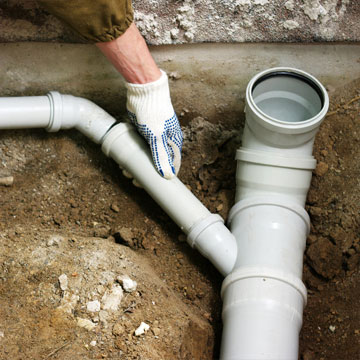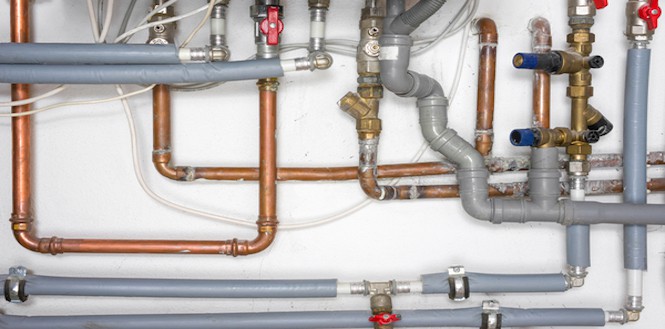Exploring The Layout of Your House's Plumbing System
Exploring The Layout of Your House's Plumbing System
Blog Article
What are your insights and beliefs on The Inner Workings of Your Home's Plumbing?

Comprehending just how your home's plumbing system works is crucial for every house owner. From delivering clean water for drinking, cooking, and bathing to safely removing wastewater, a properly maintained plumbing system is essential for your family's health and wellness and comfort. In this detailed overview, we'll discover the detailed network that makes up your home's plumbing and deal pointers on upkeep, upgrades, and handling common issues.
Introduction
Your home's plumbing system is more than simply a network of pipelines; it's an intricate system that guarantees you have accessibility to tidy water and reliable wastewater elimination. Recognizing its elements and exactly how they collaborate can assist you stop pricey repair services and make certain whatever runs smoothly.
Basic Components of a Plumbing System
Pipes and Tubes
At the heart of your pipes system are the pipelines and tubing that lug water throughout your home. These can be constructed from different products such as copper, PVC, or PEX, each with its advantages in terms of resilience and cost-effectiveness.
Components: Sinks, Toilets, Showers, and so on.
Components like sinks, bathrooms, showers, and tubs are where water is used in your home. Understanding just how these fixtures connect to the plumbing system aids in detecting issues and preparing upgrades.
Valves and Shut-off Factors
Valves regulate the circulation of water in your pipes system. Shut-off valves are essential during emergency situations or when you need to make fixings, allowing you to isolate parts of the system without disrupting water circulation to the entire house.
Water System System
Key Water Line
The major water line links your home to the metropolitan water or an exclusive well. It's where water enters your home and is distributed to various fixtures.
Water Meter and Stress Regulatory Authority
The water meter steps your water use, while a stress regulatory authority guarantees that water moves at a safe pressure throughout your home's pipes system, protecting against damages to pipes and fixtures.
Cold Water vs. Warm water Lines
Recognizing the distinction between cold water lines, which provide water straight from the primary, and hot water lines, which carry warmed water from the water heater, helps in repairing and planning for upgrades.
Drainage System
Drain Pipes Water Lines and Traps
Drain pipes lug wastewater far from sinks, showers, and toilets to the sewage system or sewage-disposal tank. Traps stop drain gases from entering your home and also catch debris that can trigger clogs.
Air flow Pipelines
Ventilation pipelines allow air right into the drain system, preventing suction that can slow drainage and trigger traps to vacant. Proper ventilation is important for keeping the integrity of your pipes system.
Significance of Correct Drain
Making certain appropriate water drainage avoids back-ups and water damage. On a regular basis cleaning drains and preserving catches can avoid expensive repair work and prolong the life of your pipes system.
Water Heating System
Kinds Of Hot Water Heater
Hot water heater can be tankless or traditional tank-style. Tankless heating units warm water on demand, while tanks store warmed water for prompt usage.
Upgrading Your Plumbing System
Factors for Updating
Updating to water-efficient fixtures or replacing old pipes can enhance water top quality, minimize water expenses, and increase the value of your home.
Modern Pipes Technologies and Their Advantages
Discover modern technologies like clever leakage detectors, water-saving commodes, and energy-efficient hot water heater that can conserve cash and decrease ecological effect.
Cost Considerations and ROI
Compute the in advance expenses versus lasting financial savings when thinking about plumbing upgrades. Many upgrades pay for themselves with minimized utility expenses and less repair work.
Just How Water Heaters Connect to the Plumbing System
Understanding just how hot water heater attach to both the cold water supply and hot water distribution lines helps in identifying concerns like inadequate hot water or leakages.
Maintenance Tips for Water Heaters
Frequently purging your hot water heater to eliminate sediment, inspecting the temperature level setups, and inspecting for leaks can expand its life-span and boost energy efficiency.
Common Plumbing Concerns
Leakages and Their Reasons
Leakages can happen because of maturing pipes, loose installations, or high water stress. Resolving leakages immediately protects against water damages and mold growth.
Clogs and Clogs
Obstructions in drains pipes and commodes are commonly triggered by flushing non-flushable items or a build-up of oil and hair. Utilizing drain screens and bearing in mind what decreases your drains can prevent obstructions.
Indications of Plumbing Troubles to Expect
Low water stress, slow-moving drains, foul odors, or abnormally high water expenses are signs of possible pipes issues that should be resolved quickly.
Plumbing Upkeep Tips
Regular Examinations and Checks
Arrange yearly plumbing assessments to catch concerns early. Search for indicators of leakages, corrosion, or mineral build-up in faucets and showerheads.
Do It Yourself Maintenance Tasks
Simple tasks like cleansing faucet aerators, checking for commode leaks utilizing dye tablet computers, or insulating subjected pipes in cool climates can stop major pipes concerns.
When to Call an Expert Plumber
Know when a pipes issue calls for professional know-how. Attempting complicated repairs without appropriate expertise can cause even more damage and higher fixing costs.
Tips for Minimizing Water Use
Easy behaviors like repairing leakages without delay, taking shorter showers, and running full lots of washing and dishes can preserve water and reduced your utility expenses.
Eco-Friendly Pipes Options
Take into consideration sustainable plumbing materials like bamboo for floor covering, which is durable and environmentally friendly, or recycled glass for counter tops.
Emergency situation Preparedness
Steps to Take During a Plumbing Emergency situation
Know where your shut-off valves are located and exactly how to shut off the water in case of a burst pipe or major leak.
Value of Having Emergency Situation Contacts Useful
Keep get in touch with details for neighborhood plumbers or emergency solutions easily offered for fast feedback throughout a pipes crisis.
Environmental Effect and Conservation
Water-Saving Fixtures and Home Appliances
Setting up low-flow taps, showerheads, and bathrooms can substantially lower water usage without sacrificing efficiency.
Do It Yourself Emergency Situation Fixes (When Relevant).
Short-lived solutions like making use of duct tape to patch a dripping pipeline or positioning a pail under a trickling tap can lessen damage till a specialist plumbing professional gets here.
Final thought.
Comprehending the anatomy of your home's plumbing system empowers you to preserve it successfully, saving time and money on repairs. By following regular upkeep regimens and remaining educated about modern-day pipes technologies, you can guarantee your pipes system operates effectively for many years to come.
Understanding Your Home Plumbing System: A Comprehensive Guide
Plumbing System: The Lifeline of Your Home
At its core, the plumbing system is designed to perform two primary functions: bring fresh water into your home and remove wastewater. The system is a network of pipes, fixtures, and other components that transport water and sewage. Residential plumbing systems include potable water supply lines, drain-waste-vent (DWV) systems, and various plumbing fixtures that make water use in daily tasks possible.
Key Components:
Water Supply: This part of your plumbing system brings municipal water into your home, passing through the main water supply line. It s responsible for supplying all water needs, from drinking to bathing.
Drainage System: It carries waste and water away from your home to the sewer or septic system. This system includes all the piping within your home that leads to external sewage or septic systems.
Vent System: An essential yet often overlooked component, the vent system allows sewer gases to escape and lets air into the drainpipes, ensuring water and waste move correctly through the system.
Fixture: More Than Just Taps and Toilets
Plumbing fixtures are the most interactive parts of the plumbing system, including faucets, showers, toilets, and sinks. Each fixture is connected to the plumbing system and plays a role in either the delivery of freshwater or the disposal of waste and wastewater.
Types of Fixtures:
Faucets and Sinks: Used for washing hands, dishes, and other daily water needs. Toilets: Dispose of human waste through the sewage system. Bathtubs and Showers: Provide bathing facilities, requiring both hot and cold water supply. Water Supply: The Source of Life
The water supply system is a critical component, ensuring that potable water is available throughout your home for various uses, including drinking, cooking, and cleaning. This system consists of pipes that distribute water to different parts of the house, controlled by valves to regulate the water flow.
Types of Plumbing: Materials and Methods
Various types of plumbing systems and materials are used in residential settings, each with its advantages and applications. From copper and PVC pipes for water supply to cast iron and ABS for drainage, the choice of materials can impact the longevity and efficiency of your plumbing system.
https://intownplumbingtx.com/articles/home-plumbing-system-guide/

I am very occupied with Anatomy of a House: Understanding the Components and I'm hoping you enjoyed reading the page. Sharing is good. You just don't know, you will be doing someone a favor. Many thanks for taking the time to read it.
Estimate Free Report this page